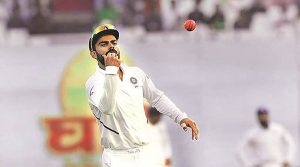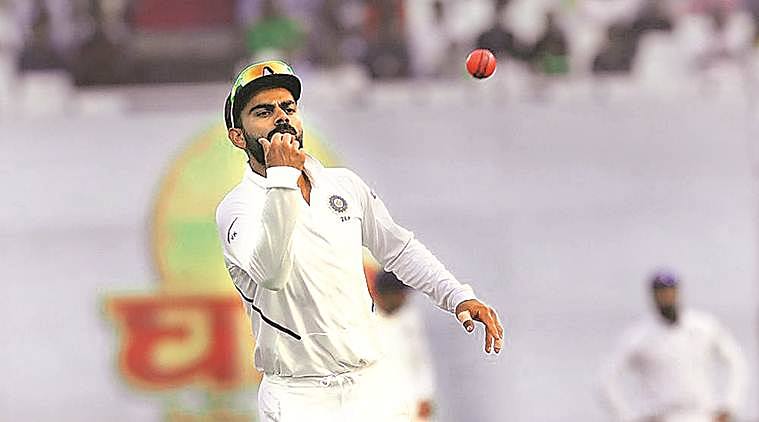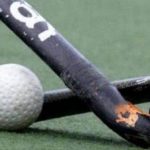Merely banning bowlers from applying saliva to shine the ball might not be effective as testing protocols need to first be in place before resuming cricket.

If the asymptotic infected players are in close proximity, and spread the infection and continue to play – it will be non-compliance of social distancing protocol
Why is ICC’s saliva ban a rather inconsequential move in ensuring a Covid-19 safe environment for cricketers?
The virus causing the COVID-19 infection spreads mainly in four ways: between people who are in close contact with one another, within about six feet; through respiratory droplets produced when an infected person coughs, sneezes or even talks; when the infected droplets land on surfaces or objects around a person. The incubation period of the infection – the time between getting the infection and showing symptoms is 1 to 14 days, and some people with the infection, without showing any symptoms can continue to spread the disease.
Therefore, the prohibition of saliva to shine the ball only addresses the issue of transmission of the virus through the saliva. In reality, despite a ban on saliva in place, the virus can continue to travel – unless the chain of transmission is not broken. And as mentioned above, there is always a possibility that an asymptomatic infected player, can continue to spread the virus by either coming in close contact with another player (within about six feet) or when an unaffected player touches a surface (a ball, the boundary rope, wicket, bottle, locker room surfaces, door knobs etc) already touched by the asymptomatic infected player; also, there is a possibility that the virus can spread from the pantry, the support staff, the hotel where the players are accommodated or the vehicle used to ferry the players.
What about sweat? Is it a virus carrier?
The evidence available has shown the virus spreads mainly through respiratory droplets and contact routes. There is some evidence that COVID-19 infection may lead to intestinal infection and be present in faeces ; but WHO states that there have been no reports of faecal−oral transmission of the COVID-19 virus to date. The virus does not spread through perspiration (sweat) – but items touched by many people (ball etc.) could pose a risk.
Shouldn’t the ICC have come up with testing protocols first before the saliva ban?
The ICC, or any other sporting body, who wants to resume the sporting events should have detailed protocols – for social distancing, protective guidelines (use of mask etc), screening & testing, self-reporting guidelines, and protocols for holding the event. All of the guidelines have to be implemented in totality to ensure that there are no lapses at any stage.
Yes, the testing protocol is very important; however, simultaneously, protocol related to self-reporting is also very critical for an athlete. If a player is showing any symptoms – the sporting body should have a detailed protocol on how the player reports to qualified doctors, who will then advise the player to undergo tests and self-quarantine; and protocols for the board to notify should also be spelled out. All the instructions related to the personal protective equipment should also be made available to the players and support staff; also, protocols related to social distancing – separate locker rooms, accommodation, training facility – where the movement of outsiders is to be restricted should be made available to organisers.
What is the first step by way of testing protocol?
As there is always a possibility that a player can be infected but remain asymptomatic – only using the thermal screening before the start of the game would prove to be futile. The only way to rule out any infection – is testing.
The ultimate fighting championship, which resumed in the United States, has made it mandatory that UFC personnel will have to undergo both the rapid antibody test and the RT-PCR COVID -19 test; and only when they are cleared by the doctors, will the sportspersons be allowed to participate.
However, it must be noted that as per the ICMR guidelines, a positive antibody test would only indicate exposure to the infection – and is not recommended for diagnosis; the antibody test will give an indication that a person has been exposed to the virus. If the test is positive, then you will have to collect the swab and do an RNA test using the PCR kit. Also, a negative test does not rule out COVID-19 infection. Therefore, the antibody test can only be used for surveillance – and the RNA test, which is the gold standard, should be used for diagnosis. Since the players are young and fit, there is always a likelihood that most of them can be asymptomatic – and testing protocol should be defined keeping these factors in mind.
How important are social distancing on and off the field even after the players get tested?
In the absence of any treatment and vaccine, social distancing is the most important aspect. Maintaining social distancing at training facilities, in hotels, the mode of transport – is key to ensure that the players are not infected. Also, each of the facilities should be virtually converted like a quarantine facility – where the movement of outsiders is restricted.
Are tests foolproof?
The RT PCR tests are foolproof. However, this test has to be carried out by a professional lab official, and the samples have to be examined in ICMR and NABL certified labs – which comply with biosafety level 2. Any lapse could result in false positivity or negativity.
Antibody tests are not fully reliable, especially if it is conducted immediately after early exposure. The reliability of such a test, in general, is seven days after the virus has entered the human body. The kit will clearly say what is the probability and at which point it is definite. Therefore, it can only be used for surveillance.
In case if players, officials and broadcasters have all been tested and they are put in a sanitised bio-dome during the duration of the game, is there any chance of the virus sneaking in?
It is scientifically impossible to fully eliminate the virus in the real world. Therefore, precautions like social distancing and use of protective equipment are crucial, even if you have been cleared by tests.
How often should the players be tested during say a one-month long series?
Like mentioned above the incubation period of the virus is 1-14 days. But the decision as to how often a test should be conducted, solely depends, upon the movement of the player and the infected persons he has come in contact with during the one month long series. Which is why, self-reporting by the player and contact tracing is very important.
Since close-in fielders or a wicket-keeper will be in close proximity of batsmen, will it be seen as non-compliance of social distancing protocol?
Yes, if the asymptotic infected players are in close proximity, and spread the infection and continue to play – it will be non-compliance of social distancing protocol. However, if these players are tested negative, and other objects in the field are fully sanitised – the players can be in close proximity, fulfilling the requirements of the game.How much does a test cost and what are its logistics? During a pandemic as serious as this is it wise to use the testing kits or to set up a top class testing facility for supremely fit and young athletes?
The entire cost of RT PCR test in India is capped at Rs 4,500. The tests have to be conducted in BSL-2 labs, which requires infrastructure, that could run into a few crores. If the sports bodies have existing lab facilities – the same can be upgraded for COVID19 testing, following the ICMR guidelines, where the young players are trained. However, since, players will be playing in different locations and the tests are conducted in less than 24 hours – transporting the sample to one dedicated lab is highly impractical; it is only practical to have a tie-up with a diagnostic chain, for conducting the tests.



